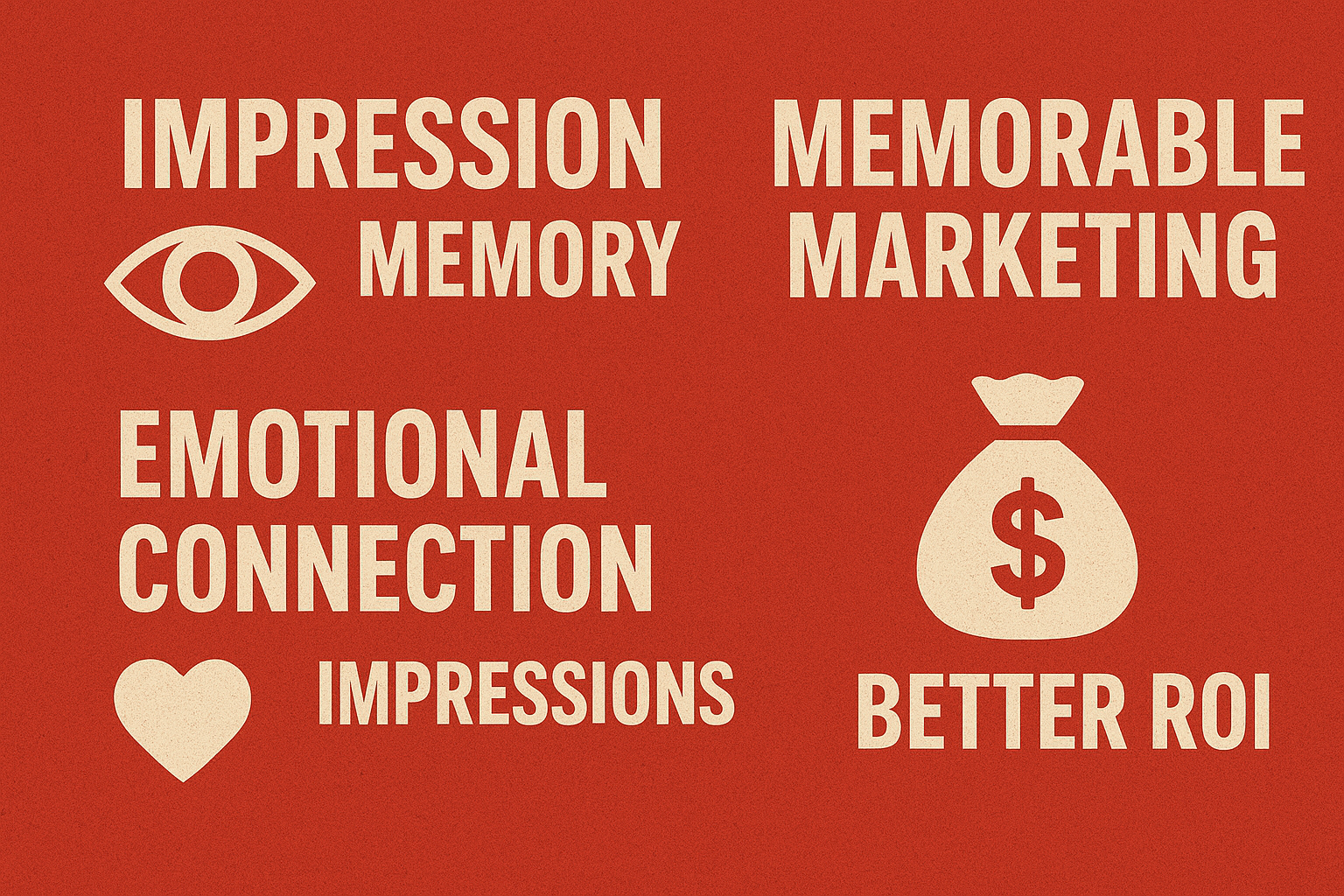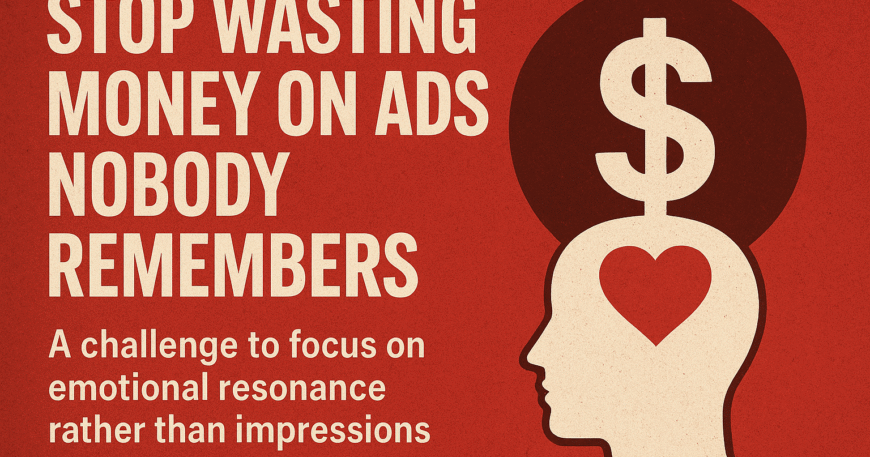Table of Contents
- Introduction
- The Illusion of Reach
- Why Emotional Resonance Matters
- Examples in Action
- The Psychology of Memory in Marketing
- The Shift Businesses Must Make
- Beyond Campaigns: Building Emotional Brands
- A Challenge to Marketers
- Conclusion
Introduction
Every year, businesses pour billions into advertising campaigns that flood our screens, feeds, and inboxes. Yet, here’s the uncomfortable truth: most of those ads vanish from memory the moment they’re scrolled past. The obsession with impressions and reach has led many companies into a costly trap—believing visibility equals impact. But impressions don’t guarantee influence. What people remember, share, and act upon comes down to one thing: emotional resonance.
The Illusion of Reach
Marketing dashboards look impressive when numbers skyrocket—millions of views, thousands of clicks, countless impressions. But ask your audience to recall even one brand they saw in their feed yesterday, and you’ll notice the gap. Numbers feed the ego of marketers and executives, but they rarely reflect lasting brand connection. Reach without recall is wasted money.
The danger here is complacency. When campaigns are designed only to maximize impressions, marketers often mistake volume for effectiveness. It’s like shouting into a crowded room—many might hear you, but how many truly listen? A brand that focuses solely on being seen risks becoming background noise in an already noisy world.
Why Emotional Resonance Matters
At the core of every decision lies emotion. Neuroscience has shown that people make choices emotionally first, then justify them logically. That’s why you remember the ad that made you laugh, cry, or feel inspired—not the one that merely flashed a discount code.
- Emotion creates memory. Ads that spark joy, empathy, or curiosity linger long after the campaign ends.
- Emotion drives action. A connection makes people more likely to buy, subscribe, or recommend.
- Emotion builds loyalty. While impressions fade, emotional stories build trust over time.
Emotional resonance also amplifies word-of-mouth. People don’t share ads because of statistics or features; they share them because they feel something worth passing on. In a digital age where peer recommendations carry immense weight, emotionally charged content has a ripple effect far beyond the initial campaign.
Examples in Action
Think of the difference between a generic car ad showing features and a heartfelt story of a family road trip. Or between a standard insurance policy pitch and the campaign that tugs at your heart with stories of security, protection, and hope. The latter examples don’t just sell—they connect, resonate, and stay top-of-mind.
Another example is in technology advertising. Many companies highlight specifications, speeds, and storage capacity. But the ads that truly break through are the ones that show how the technology enhances life—connecting families across continents, helping students achieve dreams, or inspiring creators to push limits. It’s never about the gadget itself; it’s about the human story behind it.

The Psychology of Memory in Marketing
The human brain filters out most of the noise it encounters daily. With the average person exposed to thousands of brand messages per day, only those linked to strong emotional triggers make it into long-term memory.
Marketers who ignore this fact are essentially fighting against biology. A clever slogan might make someone pause, but unless it strikes an emotional chord, it quickly fades. That’s why tapping into universal human emotions—joy, fear, pride, belonging—can be far more effective than trying to outspend competitors on ad placement.
The Shift Businesses Must Make
To escape the trap of forgettable advertising, brands must pivot from chasing metrics to creating meaning. That requires:
Storytelling over statistics – Tell stories your audience relates to, not just numbers about your product.
Customer empathy over company ego – Focus on their problems, dreams, and emotions, not just your features.
Memorable creativity over endless frequency – One unforgettable ad will outperform dozens of generic ones.
This shift demands courage. It’s easier to play it safe with tried-and-tested templates or lean on data-heavy pitches. But safety rarely inspires. Boldness does. When brands dare to show vulnerability, humor, or imagination, they stand out—not because they shouted louder, but because they touched deeper.
Beyond Campaigns: Building Emotional Brands
Emotional resonance isn’t just for one campaign—it’s the foundation of long-term brand equity. When a brand consistently communicates with empathy, storytelling, and authenticity, it establishes itself as more than a vendor. It becomes part of the customer’s identity.
This is how iconic brands are built. They don’t just sell products; they sell values, dreams, and experiences. Customers return not because of discounts, but because they feel seen, understood, and connected. In competitive markets, that emotional connection becomes the ultimate differentiator.
A Challenge to Marketers
It’s time to ask the hard question: Would you remember your own ad if you saw it? If the answer is no, then why spend money pushing it out to thousands of strangers? The true challenge for modern marketers isn’t how many people see your ad—it’s how many people remember it, feel it, and are moved to act because of it.
This challenge is both humbling and liberating. Humbling, because it forces us to admit that not all ads matter. Liberating, because it shifts our focus from chasing vanity metrics to creating something meaningful. Instead of asking “How do we increase impressions?” the better question is: “How do we make an impression that lasts?”
Conclusion
Stop wasting money on ads nobody remembers. Impressions may buy attention for a split second, but emotional resonance builds relationships that last years. In an era where audiences are bombarded with content every second, being memorable isn’t just nice—it’s survival. Brands that prioritize emotional impact will not only be remembered, they’ll be chosen.




